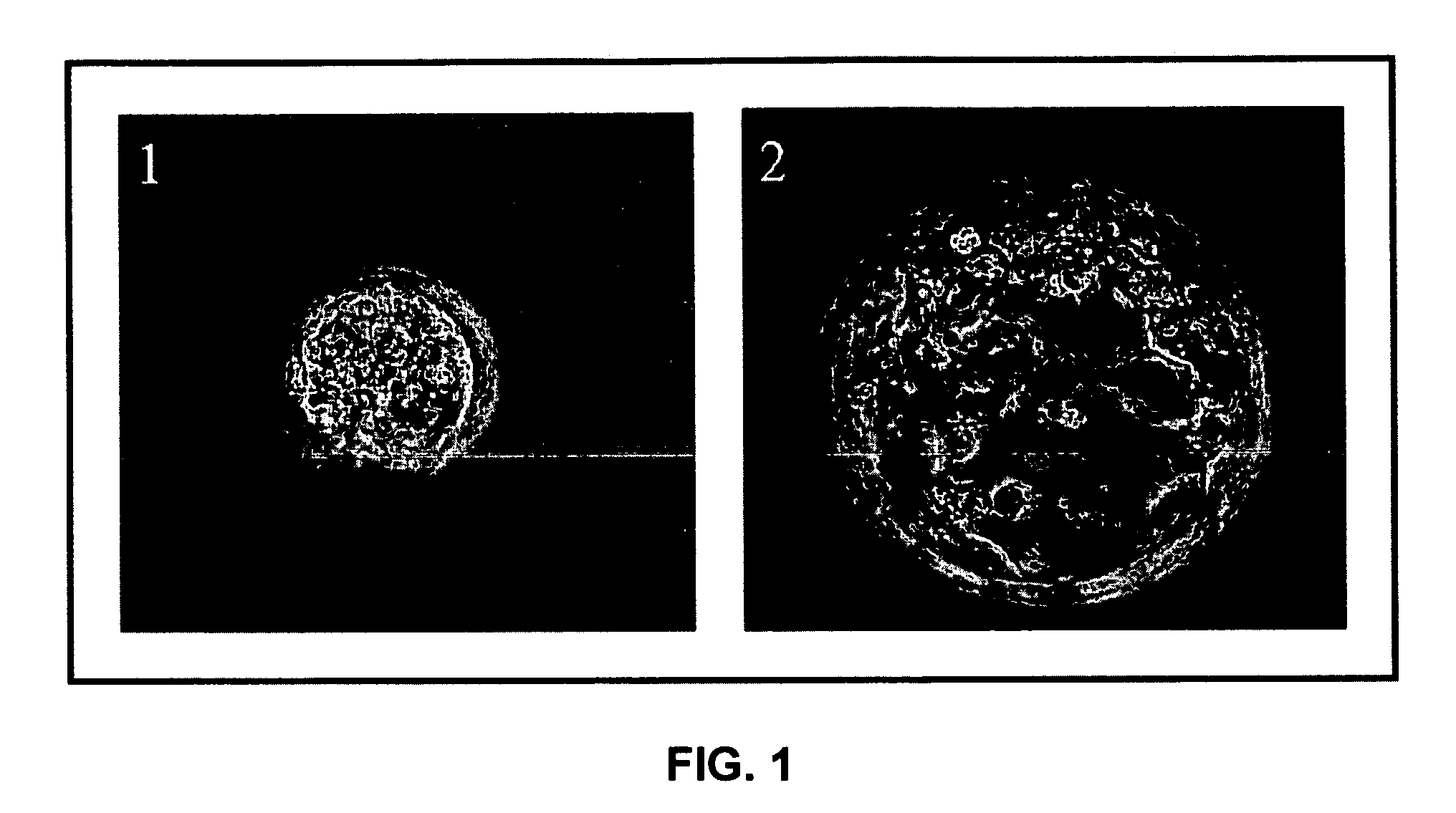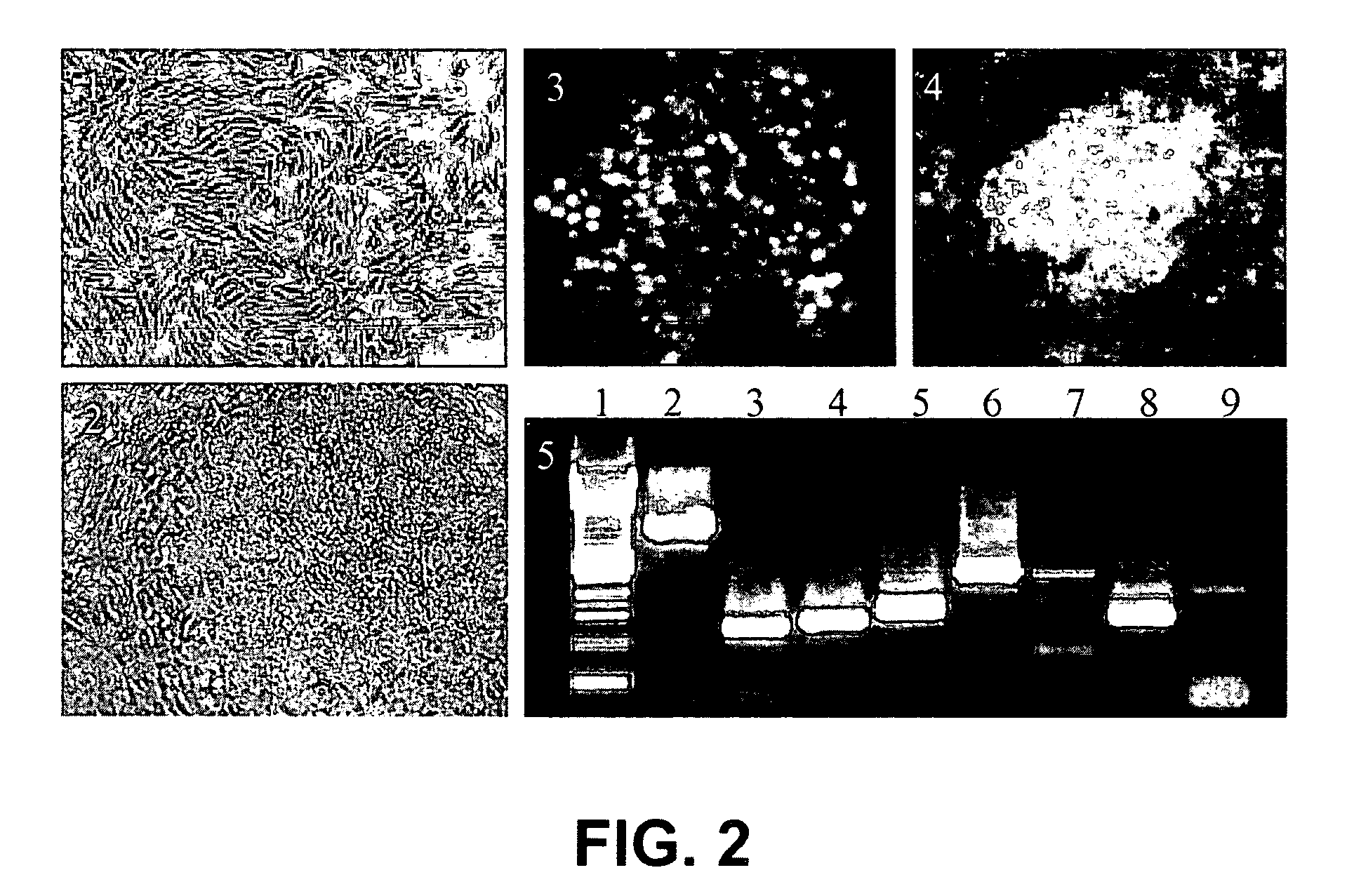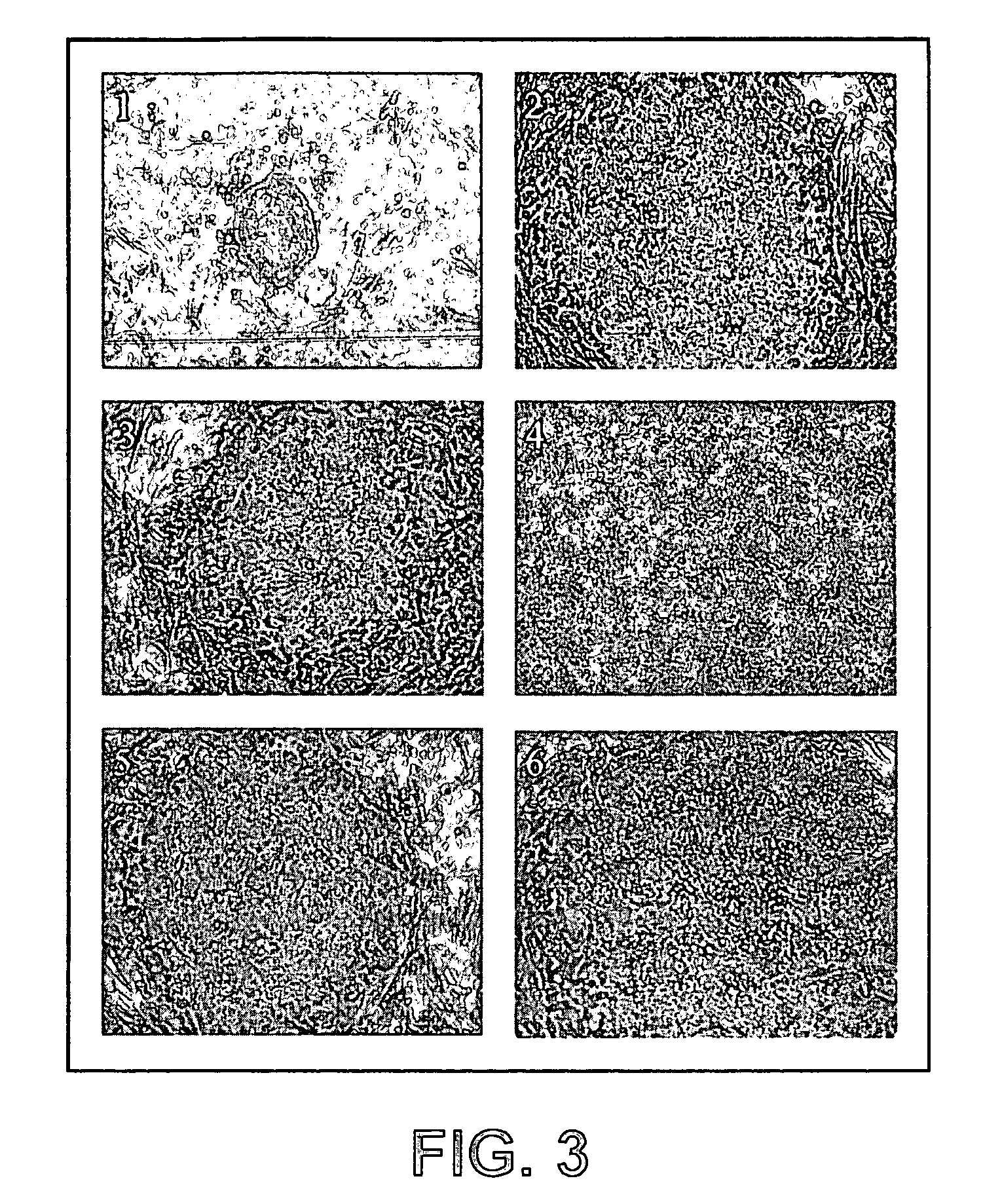Establishment of a human embryonic stem cell line using mammalian cells
- Summary
- Abstract
- Description
- Claims
- Application Information
AI Technical Summary
Benefits of technology
Problems solved by technology
Method used
Image
Examples
example 1
[0091] The present example discloses the preparation of blastocysts by in vitro fertilization.
[0092] 1) Isolating Blastocysts
[0093] Blastocyst stage embryos (blastocysts) may be isolated from a variety of sources. These blastocysts may be isolated from recovered in vivo fertilized preimplantation embryos, or from in vitro fertilization (IVF) (for example, embryos fertilized by conventional insemination, intracytoplasmic sperm injection, or ooplasm transfer). Human blastocysts are obtained from couples or donors who voluntarily donate their surplus embryos. These embryos are used for research purposes after acquiring written and voluntary consent from these couples or donors. Alternatively, blastocysts may be derived by transfer of a somatic cell or cell nucleus into an enucleated oocyte of human or non-human origin, which is then stimulated to develop to the blastocyst stage. The blastocysts used may also have been cryopreserved, or result from embryos which were cryopreserved at ...
example 2
[0099] The present example discloses the derivation and storage of mouse embryonic fibroblast (feeder) cells.
[0100] 1) Procurement of Pregnant Mice and Dissection
[0101] Mouse embryonic fibroblasts (MEFs) may be obtained from inbred C57 Black mice or other suitable strains. In an illustrative method, a mouse at 13.5 days of pregnancy / days post coitum (dpc) is sacrificed by cervical dislocation. The abdomen of the mouse is swabbed with 70% Isopropanol followed by a small incision. The viscera is exposed by pulling apart the abdominal skin in opposite directions. The uterus filled with embryos is seen in the posterior abdominal cavity. The uterus is dissected out with sterile forceps and scissors and placed into 50 ml screw capped conical centrifuge tube containing 20 ml of sterile Dulbecco's phosphate buffered saline, Ca- and Mg-free (GIBCO-BRL, Cat No. 14190-144). Uteri containing embryos are dissected out from all the pregnant animals sacrificed. The uteri are then washed 5-6 time...
example 3
[0110] The present example describes the derivation and maintenance of human ES cells.
[0111] 1) Inactivation and Plating of Mouse Embryonic Fibroblast (Feeder) Cells
[0112] The feeder cells stored in liquid nitrogen were thawed and cultured as needed. The vials were thawed by placing the frozen vials in a 37° C. water bath until the contents were semi-thawed. The contents were then collected in a tube and mixed with warm media to dilute the cryoprotectant. The cells were pelleted, resuspended, and plated in fresh MEF media (90% Dulbecco's modified Eagle's medium-High Glucose (GIBCO), 10% Fetal bovine serum (Hyclone), 1 mM L-Glutamine (GIBCO), 1% Non-Essential amino acids (GIBCO) and 0.1 mM β-Mercaptoethanol (Sigma)) in tissue culture flasks. Once the cells reached confluence, they were ready for inactivation. The cells were inactivated by Mitomycin C treatment or by gamma irradiation. Here, the cells were inactivated by Mitomycin C treatment for two and half hours. 10 ng / ml of Mito...
PUM
 Login to View More
Login to View More Abstract
Description
Claims
Application Information
 Login to View More
Login to View More - R&D
- Intellectual Property
- Life Sciences
- Materials
- Tech Scout
- Unparalleled Data Quality
- Higher Quality Content
- 60% Fewer Hallucinations
Browse by: Latest US Patents, China's latest patents, Technical Efficacy Thesaurus, Application Domain, Technology Topic, Popular Technical Reports.
© 2025 PatSnap. All rights reserved.Legal|Privacy policy|Modern Slavery Act Transparency Statement|Sitemap|About US| Contact US: help@patsnap.com



